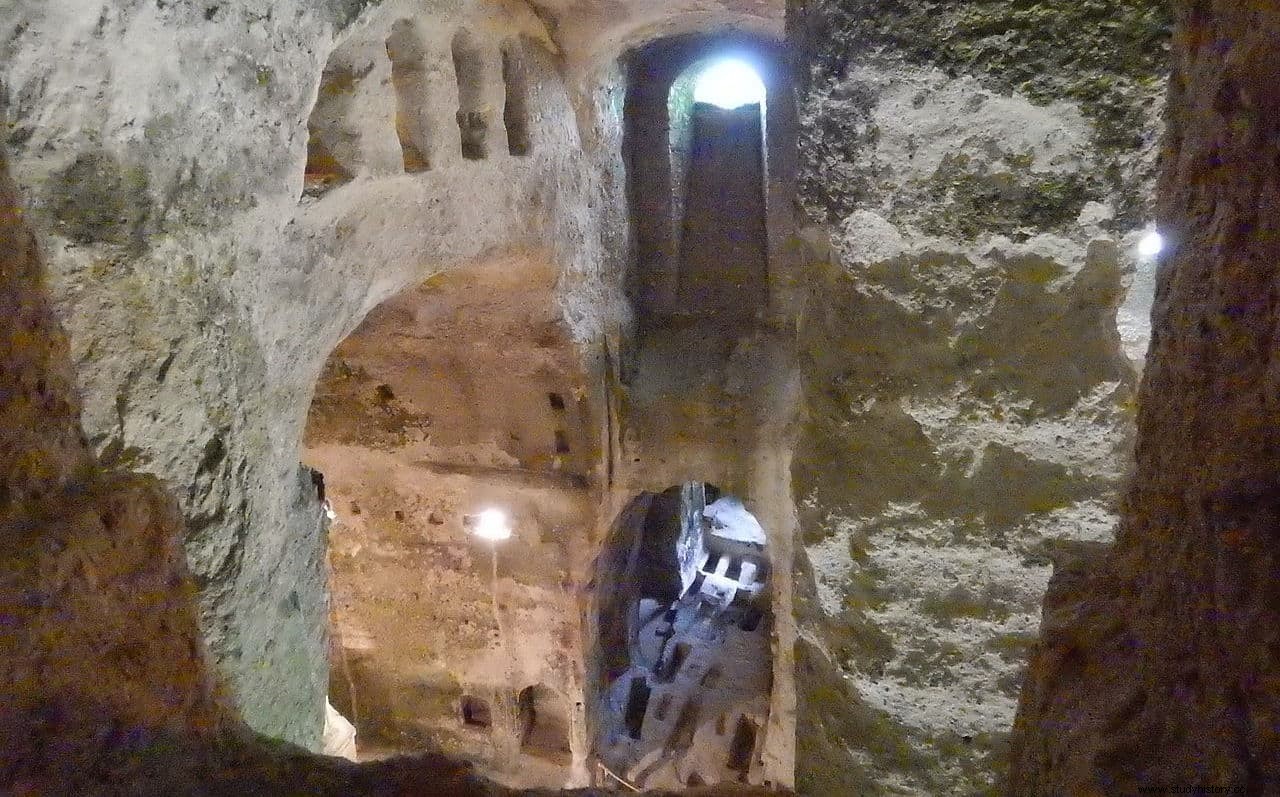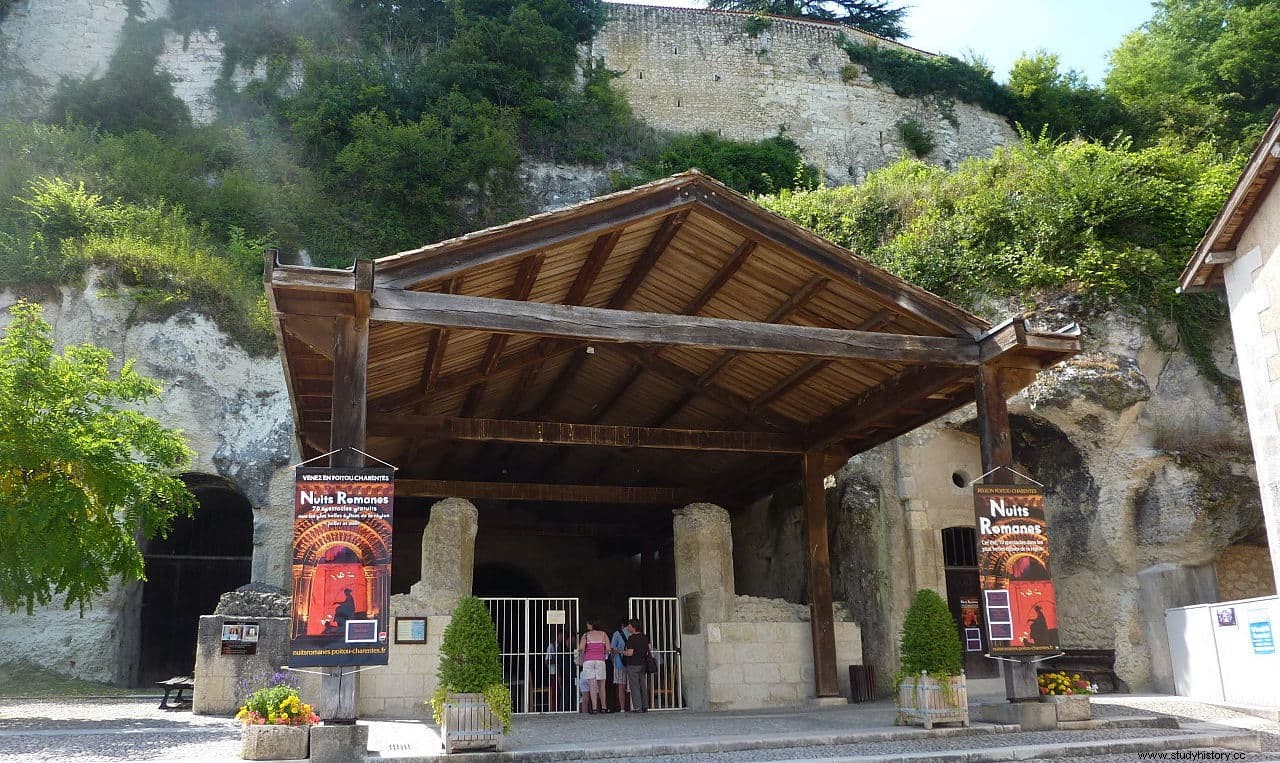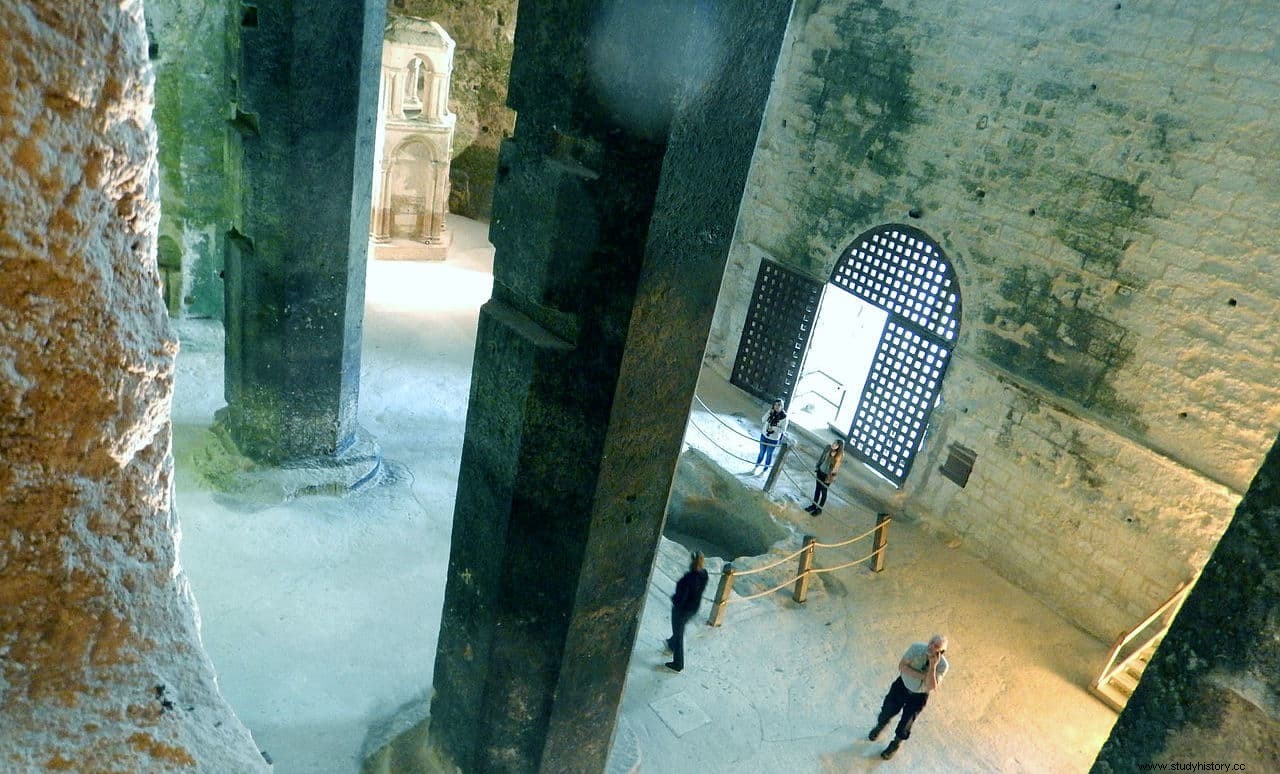In the town of Aubeterre-sur-Dronne, in the southwest of France, there is a church carved into the limestone rock of a cliff above the Dronne river, whose age is estimated at about 1,400 years. It is the church of Saint-Jean, which is generally known as a monolithic church , even though it really isn't.
The original crypt was built in the 7th century AD. and in it were found in 1961 tombs with up to 80 sarcophagi carved into the rock from medieval times (which today can be seen from a balcony). In the 12th century, a vast nave of impressive dimensions was added, built by a community of Benedictine monks and covered with a vault.

It reaches 20 meters in height and is surrounded on three sides by a gallery, located 15 meters away, which is accessed by a staircase carved into the rock. Formerly this gallery opened to the outside, on the side of the cliff, and served as an entrance, but today it is closed. Large arches and massive columns that start from octagonal bases and end in a square, mark the separation of the lateral naves. All of this is carved into the rock.
The total length of the church reaches 27 meters, by 16 wide. Inside stands a hexagonal stone reliquary whose shape is inspired by the Constantinian construction of the tomb of Joseph of Arimathea under the dome of the Holy Sepulcher in Jerusalem and is 6 meters high.
It housed the tomb of two children and of François d'Esparbes de Lussan, Marshal of Aubeterre. There is also a Paleo-Christian baptismal font decorated with a Greek cross at its base and carved into the floor of the room, like a small pool.

The entire nave is riddled with tombs, as burials continued to take place there until they were banned for public health reasons in 1865.
Despite being an underground church, it is not necessary to climb or descend steep passageways to access it. As it is excavated halfway up the rocky hill that dominates the town, the entrance is located just at ground level and is accessible even to people with disabilities, upon payment of an entrance fee, since it is one of the main tourist attractions. of the area.
Nearby is a castle, to which the church connects through an underground passage visible in the north corner of the gallery. Tradition says that it was used so that the lords could attend mass, but it is probably a channel for the drainage of rainwater.

On February 12, 1794, during the Revolution, a furnace for the manufacture of potassium nitrate, one of the ingredients of gunpowder, was installed inside to provide the new republic with this material. However, due to continuous theft, it was closed in July 1795.
The crypt would not be discovered until 1961, by chance. A truck passing through the street in front of the church caused the road to collapse, revealing this ancient room that some researchers believe may be from the 4th century AD. and have a late Roman origin, perhaps related to the cult of Mithras. In fact, the room resembles, both in size and shape, the Temple of Mithras from the 2nd century that appeared under the Basilica of San Clemente in Rome.

What is certain is that, like the rest of the complex, it was excavated by hollowing out the rock and taking advantage of existing caves, used and enlarged by the first Christians for their worship.
But it is not the only underground church in France, although it is the highest. In the same region there are two others, the monolithic church of Saint-Émilion and the chapel of the hermitage of Saint-Martial in Mortagne-sur-Gironde.
